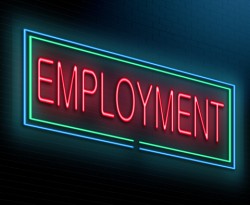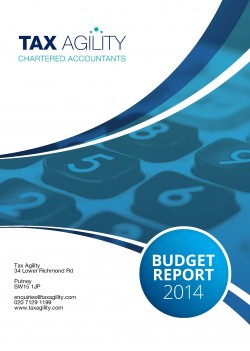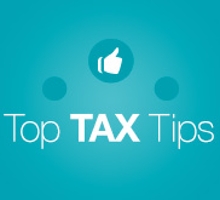Tax Tips and News for July 2014
This issue … RTI Penalty Notices; VAT on Digital Services; PAYE Reconciliations; Scary Letters; July Questions and Answers; July Key Tax Dates
Real Time Information (RTI) Penalty Notices
As an employer you may have received an RTI penalty warning letter accusing you of not submitting all of the RTI returns required for 2013/14. However, that letter may be incorrect.
HMRC has admitted that its computer has churned out inappropriate penalty warning letters to employers who have submitted employer payment summaries (EPS) during 2013/14. If you have submitted all the required RTI returns for the tax year you can ignore the warning letter, as a penalty will not be charged.
This "cry wolf" by HMRC sets a dangerous precedent, as you may be inclined to ignore further RTI penalty warning letters that could be issued later this year.
From October 2014 new penalties come into effect where the monthly full payment submission (FPS) is submitted late, or an EPS is not submitted where an FPS is not required as no payments are made. If or when those new penalties arrive you will be able to appeal against the penalty online. Note this online appeal system is not up and running yet.
From October 2014 the FPS will contain a new box that allows you to tell HMRC why the FPS is apparently late, perhaps because you are taking advantage of the concession for payrolls with nine or fewer employees.
The EPS will also be changed in October so it will relate to a particular tax month. This will avoid the need to file the EPS in the window of 20th of the current month to 19th of the following month to ensure it is applied by HMRC to the appropriate tax month.
VAT on Digital Services
Do you sell digital services such as: music or software downloads, e-books or online videos? If so, do you know where your customers are, and whether they are businesses or individuals?
From 1st January 2015, when you sell digital services across international borders you will have to collect information about your customers to determine if they are businesses or not, and where they are based. Where your international sale is to a non-business customer, from 2015 you will have to charge that customer VAT of the country where he or she is located (if that's in the EU). You will also have to register for VAT in your customer's country. This is because the VAT threshold for traders selling into other EU countries is zero.
Many music and software creators are suspicious of the large online stores such as iTunes, and want to sell their tunes or games directly to their customers. If you sell through a large online store, that store sorts out the VAT so you don't have to worry about it. However, if you sell your digital product directly to non-business customers who are located in other EU countries from 1st January 2015, you must deal with the VAT consequences.
The easiest way to do this will be through the HMRC website under a system called VAT-MOSS. This system goes live from October 2014, and it will allow you to account for VAT in all the EU countries you sell services to.
However, in order to use VAT-MOSS you must first be registered for VAT in the UK. If you are not already VAT registered, perhaps because your turnover does not exceed the UK VAT threshold of £81,000, you need to pick one of these options:
- register for VAT in the UK;
- stop selling digital services to non-business customers outside the UK; or
- sell only through online stores or other businesses.
We can help you make this choice and do the necessary registrations.
PAYE Reconciliations
If most of your income is taxed under PAYE (Pay As You Earn) you may soon receive a reconciliation of the income tax you have paid compared to the amount that was due to be paid for 2013/14. This calculation arrives on a form P800, which should be checked very carefully for errors and omissions. If mistakes are missed they can be carried forward for several years, resulting in escalating amounts of tax over or under-paid.
For example, the High Income Child Benefit Charge (HICBC) may be due where you earn over £50,000 and your family receives child benefit. But the HICBC will not be reflected in the P800 calculation, as HMRC can't accurately match child benefit claimants with the high earners in those families. If you believe you are due to pay the HICBC to claw-back the child benefit received, you need to register for a self-assessment and complete a tax return. We can help you with that.
Other common errors on the P800 arise from the changing value of taxable benefits, varying pension contributions, and estimated amounts of other income included in your PAYE code such as rents or interest.
If you have paid the right amount of tax under PAYE for 2013/14 you won't receive a communication from HMRC. If you have overpaid tax you should receive a cheque from HMRC within two weeks of the issue of the P800. Don't respond to emails promising a tax repayment - those are scams.
If the P800 shows you owe tax, that amount will normally be collected through your PAYE code for 2015/16. We can help you challenge the calculation if you think it's wrong, but we will need to see the P800 you have received, as HMRC don't send us a copy.
Scary Letters
Have you received a scary letter from HMRC lately? Perhaps all HMRC letters are scary, but this latest nudge-letter really takes the biscuit.
In it HMRC says the taxpayer's effective rate of income tax is lower than the average for taxpayers with similar levels of income. It goes on to suggest that there could be something wrong with the self-assessment tax return for 2011/12 and the taxpayer should check what they submitted for that year. Penalties and interest are mentioned, which would worry anyone - even those with nothing to hide.
Bear in mind the period in which the 2011/12 tax return can be investigated closed for most taxpayers on 31st January 2014. This means HMRC can't open an enquiry into your tax return for that year unless it discovers new information which was previously not disclosed.
HMRC sent these letters as part of a pilot to nudge non-compliant taxpayers into paying the right amount of tax. However, in this case HMRC made no attempt to screen out those taxpayers who have good reasons for paying a low proportion of their income in tax - for example because of a loss claim, gift aid donation, or pension contribution. HMRC did not read the disclosures on the tax return before pressing the send button.
If you receive a scary letter from HMRC, call us immediately. It may be another "test" by HMRC trying to squeeze more tax and penalties out of innocent taxpayers, but it could be more serious.
July Questions and Answers
Q. Our company's board has decided it needs some expert input to help with the next stage of expansion. We have approached an individual to act as a non-executive director. He wants to invoice us from his personal service company for that work, but I would rather pay him via our company's payroll. Which is the correct approach?
A. The work that individual performs through his personal service as an officer holder (i.e. director or non-executive director) is now subject to IR35, which means his company must apply PAYE and NIC to that income earned as a non-exec. The tax and NI the individual ultimately bears will be the same; whether his company invoices your company, or if your company pays him via its payroll. There is no "correct" approach.
Q. I am thinking of selling a flat that has been let since I acquired it in 2012. I do not own another property. My tenant is moving out soon, after which I will either stay in it myself or sell it. Will I get lettings relief to reduce the capital gains tax (CGT) payable?
A. Lettings relief only applies if you have lived in the property as your main home for some period. So if your tenant moves out and you sell the property immediately you will not get lettings relief, or any relief from CGT, other than the annual exemption.
However, if you move into the property and make it your own home, the gain relating to your period of occupation will be free of CGT. The last 18 months of ownership will also be free of CGT even if you are not living in the property during that period. The total gain on sale can also be reduced by lettings relief, which is limited to the lowest of these three amounts:
- the part of the gain which is exempt because the property was your main home;
- the gain attributed to the period it was let; and
- £40,000.
There are thus large tax savings to be made by occupying the property as your main home, but you must show that you intended the property to be a permanent residence, not a temporary occupation while the property was on the market. It is the quality of occupation not the length of time that demonstrates the property was your main home.
Q. I do some educational consultancy work in Africa for a business based in Ireland. My UK-based company will issue the invoice for that work, but it's in the flat rate scheme for VAT. Should that invoice be included in the turnover I apply the flat rate to?
A. The invoice your UK Company sends to Ireland for your work in Africa is outside the scope of VAT. You should not add VAT to that invoice, and you should exclude that invoice from the turnover used to calculate your flat rate payment of VAT for the quarter.
July Key Tax Dates
5 - Deadline for PAYE settlement agreement for 2013/14
6 - Deadline for 2013/14 forms P11Db, P11D and P9D to be submitted and copies of P11D and P9D to be issued to relevant employees
Deadline for employers to report share incentives for 2013/14 - form 42
14 - Return and Payment of CT61 tax due for quarter to 30 June 2014
19/22 - PAYE/NIC, student loan and CIS deductions due for month to 5/7/2014 or quarter 1 of 2014/15 for small employers
31 - Second self-assessment payment on account due for 2013/14
Second 5% penalty surcharge on any 2012/13 outstanding tax due on 31 January 2014 still unpaid
Deadline for Tax Credits to finalise claims for 2013/14 and renew claims for 2014/15
Half yearly Class 2 NIC payment due
Penalty of 5% of tax due or £300, whichever is greater for 2012/13 personal tax returns still not filed
We are committed to ensuring none of our clients pay a penny more in tax than is necessary and they receive useful tax and business advice and support throughout the year.
If you need further assistance just let us know – we're here to help!
Contact us today on 020 8780 2349 to discuss how any of the above affects your personal or business finances or get in touch with us via our contact page to arrange a complimentary, no-obligation meeting.
This blog is a general summary. It should not replace professional advice tailored to your specific circumstance.
What to Consider When Hiring an Employee
 Taking on an employee, whether as an individual or as the owner of an SME, can be somewhat of a daunting experience the first time you go about doing so, as there are numerous points you have to take into account to ensure you remain on HMRC’s good side.
Taking on an employee, whether as an individual or as the owner of an SME, can be somewhat of a daunting experience the first time you go about doing so, as there are numerous points you have to take into account to ensure you remain on HMRC’s good side.
We should note that you don’t have to be in business to be an employer. You may work a salaried position at a large corporation, but if you employ a housekeeper, nanny, or any other form of domestic staff within your home, you will be considered their employer.
Below we’ve compiled a condensed list of the core responsibilities you have when taking on a new employee, in a basic order of consideration:
Read more
How to Appeal Against Tax Decisions
 Whether you’re a contractor who feels a decision has gone against you on your Self Assessment tax return, or you’re a small to medium-sized (SME) business owner who disagrees with the amount HMRC claim you owe in Corporation Tax, you can launch an appeal against these decisions, and any associated penalties, within thirty days of notification.
Whether you’re a contractor who feels a decision has gone against you on your Self Assessment tax return, or you’re a small to medium-sized (SME) business owner who disagrees with the amount HMRC claim you owe in Corporation Tax, you can launch an appeal against these decisions, and any associated penalties, within thirty days of notification.
Understanding HMRC’s Decision
If your accountant usually handles your tax return you may not initially understand HMRC’s decision, what it relates to, and how you should approach appealing against it. In this situation you should contact your accountant, as they will be able to instantly explain the decision to you, and, if they also believe HMRC to be incorrect in their assessment, make an appeal on your behalf.
In most circumstances you will have to pay your own appeal costs when taking on a tax decision, regardless of the result.
Read more
A Guide for SMEs Exporting Goods Abroad
 Exporting goods to customers outside of the United Kingdom is the dream of many small to medium-sized (SME) business owners, as the potential upside, including increased sales volumes and international exposure, are deemed to be well worth the extra paperwork needed to make such a dream a reality.
Exporting goods to customers outside of the United Kingdom is the dream of many small to medium-sized (SME) business owners, as the potential upside, including increased sales volumes and international exposure, are deemed to be well worth the extra paperwork needed to make such a dream a reality.
In this post we’ll briefly outline the three main types of UK exports, as well as provide you with the relevant links you’ll need to get started in the international exporting business.
SMEs Exporting to EU Countries
Goods sent within the EU are described as ‘dispatches’ rather than exports, as they’re deemed to be in free circulation. This is hugely beneficial from your point of view (as an SME owner) as the duty that would normally have to be paid when exporting goods from one country to another is waived.
Read more
Four Million UK Residents Regularly Work from Home
 The number of home-workers across Britain has reached a new milestone: four million and counting. The number of people who work from home is up 500,000 since 2007, with 62,000 new home-workers being added over the course of the last year alone.
The number of home-workers across Britain has reached a new milestone: four million and counting. The number of people who work from home is up 500,000 since 2007, with 62,000 new home-workers being added over the course of the last year alone.
Analysing data freely available from the Office for National Statistics (ONS), the Trades Union Congress (TUC) concluded that not only has there been a (greater than) ten percent rise in individuals working from home since 2007, millions more occasionally work from home; with the majority of those making up this second group being employed workers.
Despite the largest proportion of home-workers being freelancers, employees are becoming increasingly likely to work from home both part- and full-time due to the clear benefits and flexibility this provides them.
Read more
HMRC Raises £23.9bn Additional Tax Revenue
 Praised by Exchequer Secretary to the Treasury David Gauke as “successfully meeting” the challenges and ambitious targets to increase its yield, HMRC last week announced record additional tax revenue of £23.9 billion for the year ending March 2014; non-inclusive of tax revenue collected from individuals and corporations who paid their taxes on time.
Praised by Exchequer Secretary to the Treasury David Gauke as “successfully meeting” the challenges and ambitious targets to increase its yield, HMRC last week announced record additional tax revenue of £23.9 billion for the year ending March 2014; non-inclusive of tax revenue collected from individuals and corporations who paid their taxes on time.
This record figure comes as a result of HMRC cracking down on tax avoiders to ensure that those taxpayers who do pay what they owe on time, every time, don’t lose out to those who persist in not doing so. This is seen as part of a longer-term plan to raise £100 billion in additional tax revenue between May 2010 and March 2015.
Read more
Tax Tips and News for June 2014
This issue … Marginal Tax Rates, Real Time Information (RTI) Interest, VAT and Discounts, Auto-enrolment, June Questions and Answers, June Key Tax Dates
Marginal Tax Rates
What rate of tax would you pay on an additional £1 of earnings? If your annual income is between £41,865 and £150,000 you may think the tax rate would be 40%, but the peculiarities of the UK tax system mean you could pay much more.
To start with earned income above the 40% threshold carries a national insurance charge (NICs) of 2% so for every £1 you earn above £41,865 (for 2014/15) you will pay 42% in tax and NICs.
Child benefit is withdrawn from the highest earner in the family at the rate of 1% of the benefit for each £100 of income exceeding £50,000 per year. This translates into an effective marginal tax rate of 60% on income between £50,000 and £60,000.
When your income exceeds £100,000 your personal allowance is withdrawn at the rate of £1 for every £2 of income above £100,000. This is an effective tax rate of 62% including NICs.
From 6 April 2015 married couples will be able to transfer up to 10% of their personal allowance between them. This will allow up to £1,050 of the allowance to be transferred from the person who earns less than £10,500, to their spouse who earns up to the 40% threshold. Thus £1 of additional income that takes you over the 40% threshold will mean you lose the whole of that transferable allowance - an infinite marginal tax rate.
If you are able to control the level of your taxable income, perhaps because you run your own business, it makes sense to adjust your income to avoid those high marginal tax rates. Perhaps you could employ other members of your family, or take them into business with you as partners, to spread the business income.
Payments of pension contributions and Gift Aid donations can stretch your 40% threshold, so the higher earner in the family should making those charitable donations and pay pension contributions. We can help you plan to avoid the highest tax rates and make the best use of all allowances available.
Real Time Information (RTI) Interest
In the past some employers would play the PAYE system, holding on to the PAYE deductions until the last payment date of the year, and then paying the balance due before interest was charged. That is no longer possible under real-time information (RTI), as interest is now charged on late paid PAYE and CIS deductions on a monthly basis throughout the tax year.
The interest is applied to payments which fall due on and after 19 May 2014, which are paid late. If you check your business tax dashboard on the HMRC website, you may see interest accrued from 19th of the month. Where you pay the PAYE due electronically the payment is due by 22nd of the month. In the case of an electronic payment the interest charged from 19th to 22nd should be cancelled.
However, there is a known problem which HMRC are working to fix. If your business made no full payment submissions (FPS) for a tax month (perhaps because no wages were paid), HMRC may have estimated the PAYE due and added that estimated amount to your PAYE account. The estimated PAYE debt is called a "specified charge". Interest accrues on the specified charge as if it was real PAYE due.
The way to get rid of a specified charge is to submit a nil Employer Payment Summary (EPS) for each of the tax months for which the specified charge has been raised for. This should also remove the interest accrued on the specified charge, but currently it doesn't. HMRC say this interest will not be pursued, and it will be removed from the PAYE account when the software is fixed.
VAT and Discounts
Do you offer prompt payment discounts to your customers - known as PPDs?
Under UK law VAT is payable on the net amount after deducting the discount, whether or not the customer takes advantage of the discount.
Say you sell a carpet for £1,000 + VAT, and offer 3% discount if the customer pays with 10 days. VAT is charged at 20% on £970 ie £194, rather than as 20% of £1,000 which is £200. Even if the customer takes two weeks to pay and thus doesn't qualify for the PPD, the amount due will be £1194.
This is a ripe loophole ready for blocking, and that is exactly what the Government is going to do from 1 April 2015. From that date it is proposed that VAT will be due to the amount the customer actually pays. So in the example above where the customer doesn't take up the PPD he pays the full £1000 plus VAT of £200.
The PPD VAT-dodge has been widely exploited by suppliers of telecommunications and broadcasting services, so the use of PPDs to reduce VAT due has already been blocked in those sectors from 1 May 2014, where the customer can't recover the VAT charged. Those will be non-business customers.
If you offer PPDs you may need to change your sales software. We will keep you informed of the details of the changes, when they are announced nearer the time.
Auto-enrolment
Auto-enrolment is the term for the law that requires all employers to register their employees into a qualifying workplace pension scheme. This requirement is being rolled-out to the largest employers first and will eventually apply to the smallest employers from June 2015 onwards.
For example if you have 62 to 89 employees you have to apply auto-enrolment from 1 July 2014. Those with larger payrolls should already have auto-enrolment in place.
There are let-outs; auto-enrolment only applies to employees working in the UK who are aged 22 to state pension age, and who earn more than the personal allowance (£10,000 for 2014/15). After being enrolled in to a pension scheme, each employee has an opt-out period of one month whereby they can receive a full refund of any contributions already made. Another opt-out opportunity must be offered every three years.
Once the workplace pension scheme is running both the employee and the employer must make contributions, which will start at 1% of qualifying earnings rising to a total of 8%. Qualifying earnings consist of pensionable pay in the range £5,772 to £41,865 (for 2014/15). The employee's employment contract will define what "pensionable pay" is.
We can help you work out what auto-enrolment may cost you, and which employees will be covered. There is a lot to think about, and if you haven't already got a suitable pension scheme in place you will need to set one up. There are significant penalties for employers who fail to enrol employees on time, so don't let the auto-enrolment timetable overtake you.
June Questions and Answers
Q. My father resigned as a director of our family business in March, and started to draw his pension, but he retained 15% of the shares in the company. It seems likely that company will be sold later this year. Will my father get entrepreneurs' relief on any the gain he makes on his shares?
A. Unfortunately not. To qualify for entrepreneurs' relief the shareholder must be an employee or officer (director or company secretary) for the full 12 months that ends with the sale of the shares, or the date the company ceases to trade. If you reappoint your father as a director (he doesn't have to get paid for that role) and then wait for 12 months before the sale, he should qualify for entrepreneurs' relief.
Q. I have just received my renewal pack for claiming working tax credits, but the income figure for 2013/14 doesn't agree with my P60 form and payslips from my employer - by a wide margin. What's gone wrong and what should I do?
A. The difference between the figures could be due to any of the following;
- Where you have more than one source of income (perhaps a redundancy payment from a previous employment) your tax credits renewal notice will show the total from all the sources that you received inc ome from in 2013/14.
- Your pay shown on the P60 may have been corrected at a late stage after the Tax Credits Office extracted the figures used for the renewal notice.
- Your income counted for tax credits includes the value of certain benefits in kind such as the provision of a company car, which isn't included in the amounts reported on the form P60 or on payslips. The value of those benefits will be reported on a form P11D which you should receive by 6 July.
If you believe the tax credits income figure for 2013/14 is wrong ring the number given in the renewal pack and report the correct figure.
Q. I run a small independent chemist which has three employees. I was told that my business would not qualify for the employment allowance as a good deal of our work involves dispensing NHS prescriptions. Is that true?
A. The initial guidance from HMRC appeared to indicate that pharmacies would not qualify for the employment allowance, which is worth up to £2000 per year. However, revised guidance from HMRC confirms that independent pharmacies that are conducting a business, including over the counter sales as well as dispensing NHS prescriptions, are entitled to claim the employment allowance.
June Key Tax Dates
19/22 - PAYE/NIC and CIS deductions due for month to 5/6/2014
We are committed to ensuring none of our clients pay a penny more in tax than is necessary and they receive useful tax and business advice and support throughout the year.
If you need further assistance just let us know – we're here to help!
Contact us today on 020 8780 2349 to discuss how any of the above affects your personal or business finances or get in touch with us via our contact page to arrange a complimentary, no-obligation meeting.
This blog is a general summary. It should not replace professional advice tailored to your specific circumstance.
Tax Tips and News for April 2014
This issue ... Salary and Dividend Strategy 2014, Salaried Members of LLPs, Cross-border Services, Search for Landlords, April Question and Answer Section & April Key Tax Dates
Salary and Dividend Strategy 2014
As a director and shareholder of your own company you can decide how much salary to pay yourself each month in order to use your tax-free personal allowance in the most tax-efficient way. Any further funds you need can be extracted as a dividend if the company is making a profit.
If you are a director of your company and you don't have a contract that sets out terms of employment with the company, you don't have to pay yourself the national minimum wage. So how much should you pay yourself?
For 2014/15 if you were born after 5 April 1948 you have a tax free personal allowance of £833 per month (£10,000 per year). You could take a salary at that level and pay no income tax, assuming you have no other taxable benefits from the company such as a car.
However, you will pay national insurance (NICs) on that salary as the NICs threshold is only £663 per month. From a gross salary of £833 the company must deduct NI of £20.40 and set-aside employer's NI of £23.46 on top. The company will have an employment allowance of £2,000 for the year to set against its employer's NI due on all its employees, so it won't have to pay over employer's NI until that £2000 is used up.
If you take a salary of just above the NI lower earnings threshold of £481 per month, you will get an NI credit towards your state pension, but you don't pay any tax or NI. However, at that annual salary level (£5,772) you will be "wasting" £4,228 of your tax-free personal allowance, unless you have other income to cover it.
Talk to us about the best salary level for you, which takes into account all your other sources of income.
Salaried Members of LLPs
Do you operate your business as an LLP? If you do, you need to be aware of the change in tax treatment of certain LLP members from 6 April 2014. Members who meet all of these conditions will be taxed as employees:
A. works for the LLP as an LLP member and at least 80% of the amounts paid to him for that work are disguised salary;
B. does not have significant influence over the affairs of the whole of the LLP; and
C. is not required to contribute funds to the LLP (a capital contribution), or if he does contribute funds that contribution is less than 25% of his disguised salary for the current tax year.
From the member's perspective the easiest of the conditions to break is C - provide capital to the LLP (aka: partner's loan). Current members of the LLP will have until 6 July 2014 to contribute the required level of capital, but they must make a firm commitment to do this by 6 April 2014. Members who join the LLP on or after 6 April 2014 will have two months in which to raise the required level of capital to break condition C.
If you are caught by these new rules and become a deemed employee of the LLP on 6 April 2014, you will cease being self-employed on 5 April 2014. Depending on the accounts year-end of the LLP, you could be taxed on up to 23 months of profit in 2013/14, subject to any overlap relief. The on-account tax payment you made on 31 January 2014 will almost certainly be incorrect. Talk to us about recalculating your tax payments for 2013/14 and 2014/15.
The LLP business that has members caught by these new rules will have to set up a PAYE scheme if it doesn't already have one. We can help you with that.
ross-border Services
You may have heard that the price of electronic books and music may rise on 1 January 2015. This is because electronic services (including e-books and music), will be subject to VAT in the country where the customer lives from 2015. Currently, large suppliers of electronic services tend base themselves in the EU country with the lowest rate of VAT, so they can sell their services with that low rate attached.
This change in the law could affect your business if you sell electronic services to non-business customers in other EU countries. "Electronic services" includes a wide range of things including the provision of software online, writing or supporting websites.
Say you design a website for someone in France (who is not a business). From 2015 that sale will be subject to French VAT rates and you will probably have to register for VAT in France, as the French VAT registration threshold is very low. Similarly, you may have to register for VAT in other EU countries where you sell electronic services to non-business customers.
Fortunately, there will be a "mini one-stop shop" (MOSS) on the HMRC website that will allow you to register for VAT in all the EU countries in which you sell electronic services, and make a single VAT return for all those countries. The MOSS will be open to start the registration process from October 2014.
In the meantime you need to check which of your products will come within the definition of "electronic services" for these new rules. We can help you with that.
If you are selling across EU borders you also need to think about the following:
- How to identify the location of your customers, and store that information.
- How to determine if your customer is in business or not, and what evidence will you need to support this decision.
- If you sell through an agency, check what the contract says about who takes responsibility for VAT registration.
Search for Landlords
In our March newsletter we told you about HMRC's let property campaign (LPC) which aims to nudge landlords into confessing undeclared rental income. We also warned that HMRC is actively looking for errant landlords. We now know how those landlords will be found.
HMRC is writing to letting agents in the UK, asking them to provide details of the properties they have let in 2012/13, including the amount collected per property and the addresses of the let property and the landlord. The letting agent is given just 60 days to provide the information, or face a penalty of £300, and further penalties of £60 per day for additional delays.
The agent also can't refuse to provide its customers' details on the grounds that such personal information is protected by Data Protection Act 1998, as the tax law overrules the Data Protection Act in these circumstances.
If you have received such a request from HMRC we can help you compile the information in the form demanded - which must be on a pre-defined spreadsheet.
If you think your overseas property will never be found by the Taxman, think again. HMRC is using its "connect" programme to search holiday rental websites for UK residents who are letting overseas properties. If you live in the UK your overseas rents should be declared in the UK, as well as to the local tax authorities. Even if you make no profit from the property, you still need to show all the income and expenses on your tax return.
April Question and Answer Section
Q. I've recently made a gain of £62,000 by selling the shares I acquired through EMI options issued by my employer. Does that big gain push me into a higher tax bracket for income tax? What tax should I expect to pay on the gain?
A. The gain made in 2013/14 by selling the shares you acquired through the EMI share option scheme may qualify for entrepreneurs' relief and thus be taxable at 10% after deducting your annual exemption of £10,900. However, entrepreneurs' relief will only apply if you were still employed by the company at the time you sold the shares, and the period between the grant of the share options and the date you sold the shares was at least 12 months.
The amount of the gain in 2013/14 will not affect the top rate of income tax you pay for that tax year.
Q. I am a member of the APM (Association for Project Management) and my company pays my membership fees to the APM on my behalf. Does this payment have to be reported on the form P11D? If so, do I pay tax on the membership fee?
AIf your company does not already have a "dispensation" from reporting P11D business expenses for 2013/14 it could apply for one by 5 April 2014 using form P11DX or on the HMRC website. That dispensation will cover payment of the APM fees as the APM is on HMRC's approved list of professional bodies.
If the dispensation for 2013/14 is not acquired the APM fee should be reported on the form P11D for that tax year. You should then enter the P11D figures on your 2013/14 tax return and make a claim on the same return to set the APM membership fee against your taxable earnings. As a consequence of that claim on your tax return you should not pay tax on the membership fee.
Q. Can my company make regular donations to charity and receive tax relief for those gifts?
A. Yes, if your company is making a profit it can make charitable donations and get relief against corporation tax. It should claim the total donations made in the accounting period on the corporation tax return for that period. However, the deduction of donations cannot change a taxable profit into a loss, or increase a taxable loss. In those cases there is no tax relief for the donations. Although, if your company is part of a group of companies, the relief for the excess donations may be passed to another member of the group.
The recipient charity cannot claim gift aid relief on the company's donation.
April Key Tax Dates
April Key Tax Dates
05 - End of 2013/14 tax year. Last day to use up your annual exemptions for capital gains tax, inheritance tax and ISA's
14 - Return and payment of CT61 tax due for quarter to 31 March 2014
19 - PAYE/NIC, student loan and CIS deductions due for month to 5/4/2014 or quarter 4 of 2013/14 for small employers. Interest will run on any unpaid PAYE/NIC for the tax year 2013/14
30 - Additional daily penalties of £10 per day up to a maximum of £900 for failing to file self-assessment tax return due on 31 January 2014
To speak with a professional to discuss how any of the above affects your personal or business finances, contact us today on 020 8780 2349 or get in touch with us via our contact page to arrange a complimentary, no-obligation meeting.
This blog is a general summary. It should not replace professional advice tailored to your specific circumstance.
Full Budget 2014 Report
 Further to our blog posted earlier, we are pleased to provide a full report of the Budget 2014, highlighting the main items affecting both SME business owners and individuals.
Further to our blog posted earlier, we are pleased to provide a full report of the Budget 2014, highlighting the main items affecting both SME business owners and individuals.
The Tax Agility 2014 Budget Report provides a concise summary of the announcements made by Chancellor George Osborne during the 2014 Budget on Wednesday 19 March 2014.
Please click the image or the link below to download the full report:
Ten Summarised Points from 2014 Budget
 Yesterday, Wednesday 19 March 2014, Chancellor George Osborne delivered his fourth full budget to the House of Commons since the Conservatives came into power in 2010; a budget that has been seen as pivotal given that it will be Mr Osborne’s last before next year’s General Election.
Yesterday, Wednesday 19 March 2014, Chancellor George Osborne delivered his fourth full budget to the House of Commons since the Conservatives came into power in 2010; a budget that has been seen as pivotal given that it will be Mr Osborne’s last before next year’s General Election.
Below we’ve summarised ten key talking points from Budget 2014, placing focus on areas that affect your personal finances, savings, and investments.
Read more








